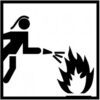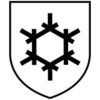GLOVE STANDARDS
CE Categories
Category 1
Gloves of simple design, for minimal risks only. Example of gloves in this category are house-hold gloves used for cleaning and for protection against warm objects or temperatures not exceeding +50° C.
Additional gloves in this category can include light-duty gardening gloves or other work where the risk for injury is minimal.
Category 2
Gloves of intermediate design, for intermediate risks. Gloves are placed in this category when the risk is not classified as minimal or irreversible. The gloves must be subjected to independent testing and certification by a Notified Body, whom then issues a CE marking showing the gloves protective capacities. In this category you will find general handling gloves requiring good puncture and abrasion performance according to EN 388.
Category 3
Gloves of complex design, for irreversible or mortal risks
Gloves in this category are designed to protect against the highest levels of risk e.g. highly corrosive acids. Gloves in this category must also be independently tested and certified by a Notified Body (approved by the EU commission).
EN 659

BS EN 659:2003+A1:2008 Protective gloves for firefighters
BS EN 659 is a European Standard which defines minimum performance requirements and test methods for firefighters’ protective gloves.
BS EN 659 applies only to firefighters’ protective gloves which protect the hands during normal firefighting, including search and rescue.
These gloves are not intended for deliberate handling of liquid chemicals, but provide some protection against accidental contact with chemicals.
Protective gloves for special operations within firefighting service are excluded from the scope of this standard.
EN 388

BS EN 388
1 Resistance to abrasion
Based on the number of cycles required to abrade through the sample glove (abrasion by sandpaper under a stipulated pressure). The protection factor is then indicated on a scale from 1 to 4 depending on how many revolutions are required to make a hole in the material. The higher the number, the better the glove. See table below.
2 Blade cut resistance
Based on the number of cycles required to cut through the sample at a constant speed. The protection factor is then indicated on a scale from 1 to 4.
3 Tear resistance
Based on the amount of force required to tear the sample.
The protection factor is then indicated on a scale from 1 to 4.
4 Puncture resistance
Based on the amount of force required to pierce the sample with a standard sized point. The protection factor is then indicated on a scale from 1 to 4.
EN 420

EN 420
This standard defines the general requirements for protective gloves in terms of construction, fitness of purpose, safety, depending on the materials in the glove.
The gloves themselves should not impose a risk or cause injury to the user.
The pH of the gloves should be as close as possible to neutral.
Leather gloves should have a pH value between 3.5 – 9.5.
The highest permitted value for chromium is 3 mg/kg (chrome VI) in leather.
Specific details of any substance used in the glove which is known to cause allergies
Sized by reference to an agreed common European hand size, for example minimum length.
EN 407

EN 407
The nature and degree of protection is shown by a pictogram followed by a series of six performance levels, relating to specific protective qualities. The higher the number, the better the test result. The following is tested:
1 Resistance to flammability
The glove’s material is stretched and lit with a gas flame. The flame is held against the material for 15 seconds. After the gas flame is distinguished, the length of time is measured for how long the material either glows or burns.
2 Resistance to contact heat
The glove’s material is exposed to temperatures between +100°C and +500°C. The length of time is then measured for how long it takes the material on the inside of the glove to increase by 10°C from the starting temperature (approx. 25°C). 15 seconds is the minimum accepted length of time for approval. For example: to be marked with class 2, the glove’s inside material must manage 250°C heat for 15 seconds before the material exceeds 35°C.
3 Resistance to convective heat
The amount of time is measured for the heat from a gas flame (80Kw/kvm) to increase the temperature of the glove’s inside material by 24°C.
4 Resistance to radiant heat
The glove’s material is stretched in front of a heat source with an effect of 20-40 kw/kvm. The average time is measured for heat penetration of 2.5 kw/kvm.
5 Resistance to small splashes of molten metal
The test is based on the total number of drops of molten metal required to increase the temperature by 40°C between the inside of the glove and the skin.
6 Resistance to large splashes of molten metal
Simulated skin is attached to the inside of the glove material. Molten metal is then poured over the glove material. The total number of grams is measured of how much molten metal is required to damage the simulated skin.
EN 511

EN 511
Two things are measured with the glove: 1. how the glove’s material leads cold, and 2. the material’s insulating capacity (with contact).
The last digit next to the pictogram shows if water penetrates the glove after 30 minutes. The pictogram will be accompanied by a 3-digit code
The first digit show resistance to convective cold (performance level 0-4)
The second digit show resistance to contact cold (performance level 0-4)
The higher performance level the better insulating capacity.
The third digit show permeability to water (performance level 0 or 1)
0 = water penetration after 30 minutes
1 = no water penetration after 30 minutes.